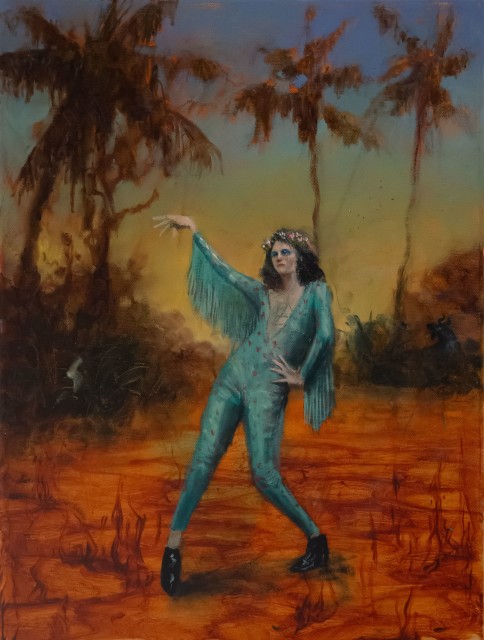You who come in here, piece by piece with understanding,
tell me afterwards whether so many miracles have been done
for the sake of deception or for the sake of magic.
-- Prince Pier Francesco Orsini
Having spent their days in various, opulently unique locations, the Black Flamingo Sad Boys (BSFB), a hedonist gang free of convention, which were first introduced to audiences in 2016, have made their way to Bomarzo, Italy, where they seek refuge once more.
In Bomarzo lies the Sacro Bosco (Sacred Woods), which is home to the Garden of Monsters (Parco dei Mostri), a post-High Renaissance sculpture park commissioned by Prince Pier Francesco Orsini in 1552 as an expression of his anarchically romantic and playful thought as well as his grief stemming from his life’s tragedies. Unlike other parks that were built during that time, Sacro Bosco steps away from the inherent symmetry and logic, and rather evokes a sense of shock and provocation in its visitors with its magical and chaotic narrative.
Made during his stay in Bomarzo, Philip Mueller’s new works observe the infamous Black Flamingo Sad Boys as they frolic throughout the park at different times of one day. The now moss-covered, gargantuan ghoulish creatures, said to have been inspired by Arcadia, make their appearances in these works. This is the new residence of the Naxos Racing Team (NRT) and the home to “KLUB ORCUS”, a day and night club whose entrance resembles a face made of stone, named after Orcus, an underworld Roman and Etruscan god.
Mueller has visited the remote town several times. In the flat where he would reside located on a hill facing the park, there was a bathroom accessible by a set of stairs that had a window overlooking the Garden of Monsters. Mueller would overflow the bathroom to make an indoor pool in which he would swim up to the window and look out to the Garden, where he would see the BSFBs meandering in the park.
The series that will be exhibited at DIANA are mostly small paintings, mimicking a view from the window. Each painting shows the mood of a specific hour of a single day in the garden, so viewers can indulge in the chaotic scenes that take place and can witness for themselves what happens throughout this day, taken through important stages of the day’s feast.
While several familiar faces from Tiberio Beach Resort and the NRT make their way back into these compositions, new guests and residents are introduced as well. One recurring character, a woman, makes an appearance throughout a few of the scenes. Uncertain of what her presence actually means, it could be considered that she is Orsini’s wife, Giulia Farnese, who passed away shortly after his release as a prisoner of war and to whom the garden was dedicated to.
The largest painting exhibited in the space NRT bomarzo Offenbarung, depicts a skull-faced woman standing by a pool as she prepares to dive in. With her back facing the viewer, she turns her face with an unsettling stare. This is the recurring woman, an embodiment of an epiphany for Mueller. Upon closer examination of her face, however, viewers will notice that only her nose is missing. This could be perceived as a reference to Mueller himself. Seven swords aim at the woman, each representing one of the 7 pleasures and pains of Mariah.
In a symbolically heavy composition, various emblems jump out to the viewer, such as the tattoo on the woman’s back depicting a snake eating an apple, the inscriptions on the rim of the umbrella, or even the Demogorgon-like creature looming in the background. Such symbols are integral to Mueller’s works and can be found within myriad of his paintings. Each element carefully thought out – tying the overall narrative of the works together.

